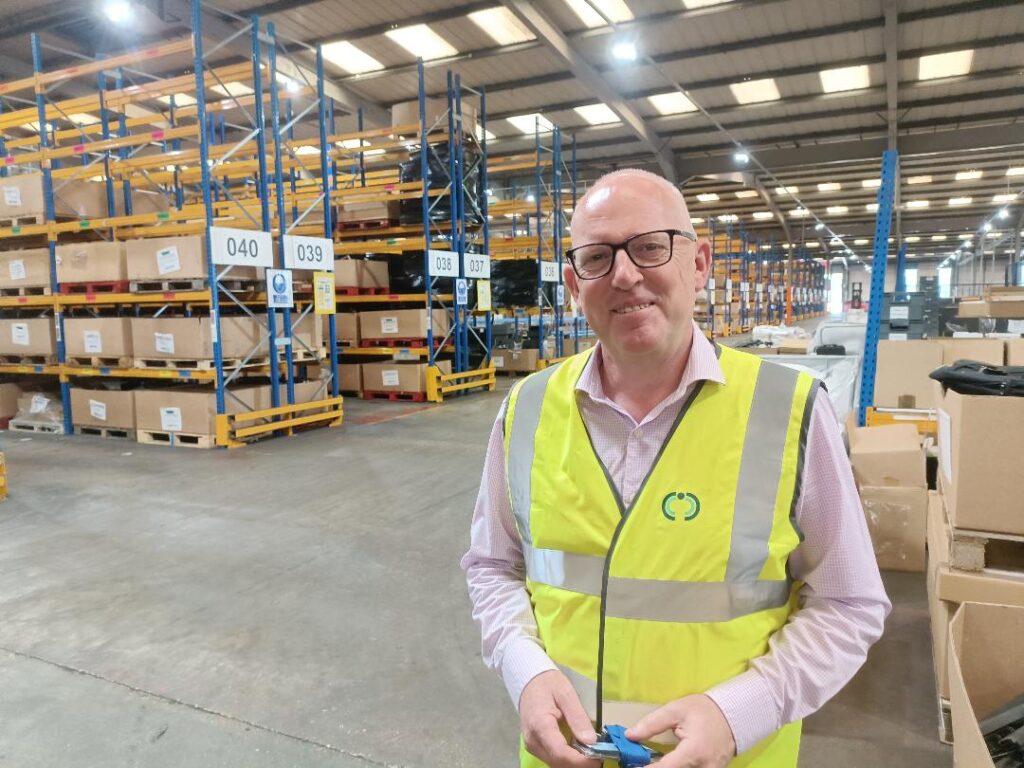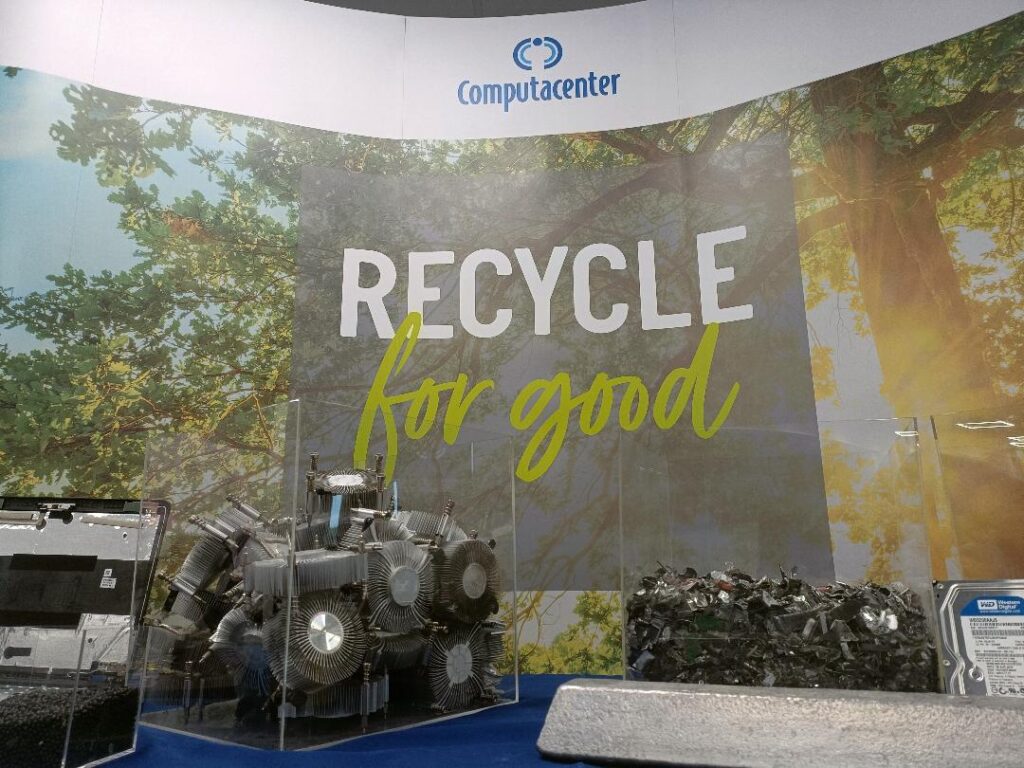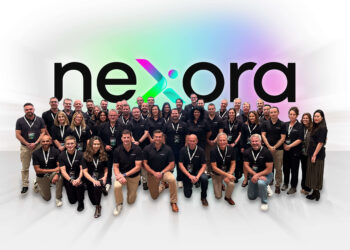“Is it viable? It’s ambitious, but I genuinely believe it’s possible.”
That’s Julian Wase’s view of Computacenter’s newly set 1:1 device recovery goal, expressed as he walked IT Channel Oxygen around Computacenter Circular Services’ Braintree HQ.
Linked to the compensation packages of Computacenter’s top execs, the new goal will see the LSE-listed outfit over time attempt to recover as many PCs and other full hardware units as it sells, not just in the UK but globally.
It was inspired by Computacenter CEO Mike Norris’ desire to set a sustainability goal he “can contribute to” in the short term, and will be fuelled by rising demand among Computacenter’s blue-chip customers for circular IT.
But Computacenter has its work cut out to reach its goal.
“This is becoming increasingly important to the customer base”
Last year, Computacenter’s Circular Services arm – formerly known as RDC – recovered 775,000 devices. But in the same period, Computacenter sold a whopping 4.7 million devices, meaning it currently recovers only one device for every six sold.
Can it bridge the gap?

Handing IT Channel Oxygen our high-vis jacket, Wase, who is Computacenter’s Circular Services Director, asserted that it is indeed possible (although Computacenter has opted against setting an end date for its goal).
Computacenter is among the few resellers to operate its own circular services arm, having acquired RDC back from Arrow in 2019 after a four-year hiatus.
Its Braintree site has the capacity to double or even treble the volumes it takes in, Wase said.
On top of this, Computacenter plans to begin exporting the UK model to its largest overseas businesses in Germany and the US, starting as soon as Q4.
While more than half of Computacenter’s customers currently do not use its circular services proposition, circular IT is becoming more important to them, Wase claimed.
“By preserving the value of devices, we are able to report, at a device level, the carbon and water implications,” he said.
“Where we reuse devices – whether that’s redeploying them back into customers or remarketing them and reselling them, typically into the broker market – that has avoided a new device being manufactured. And we report that back to the customer.
“This is becoming increasingly important to the customer base. We only deal with big customers, and they all have ESG reports. I read through 15 of them and it’s increasingly visible at board level.”
By linking it to exec remuneration, Computacenter is “not just paying lip service” to the goal, Wase said. This year’s target is to boost the number of devices taken back by 15%, from 775,000 to 890,000.
“Customers like it when we’re talking to them about [it being linked to remuneration]. They say ‘oh right, you’re taking it seriously’. And we are,” he said.
“Our penetration in circular services has a long way to go”
The challenge, however, is convincing more customers to switch from their current ITAD to Computacenter Circular Services or – as Wase suspects may be the case more often than not – begin using a specialised circular services outfit rather than a generic clearance company.
“Our penetration into those customers from a circular services perspective has a long way to go,” he said.
“My view is that it’s not about replacing existing suppliers. I suspect [some customers] have these clearance companies that come into their buildings who are just taking [the devices] away. We just don’t know. That’s a huge opportunity for us.”

Computacenter’s sales pitch to customers emphasises what it claims is an unrivalled ability to track the journey of each item as it passes through its sites.
“We think we go to a greater length than any of our competition – that’s ITAD or indeed reseller competition – in terms of the provenance of what happens to that equipment,” Wase said.
Data sanitation is one of three primary outcomes customers are targeting when it comes to end-of-life equipment (the other two being value return and sustainability data), he added.
The Braintree site has a 1.2km interior fence with one gate that can be passed only with proof of collection – part of what Wase calls the “chain of custody”. Data is erased using software from Blancco, for which Computacenter is just one of two UK Platinum partners (alongside Sims Lifecycle Services).
“No equipment can leave here that can be traced back to the original customer. But we have to be able to prove that, so the whole process is around the chain of custody from the initial requirements, right the way through to the end disposition,” Wase explained.
The rising appetite for device lifecycle management services will provide another new source of “guaranteed volume”, Wase said.
This is where Computacenter’s status as one of the few resellers to also operate an ITAD arm comes up trumps, he claimed.
“That’s a service that Computacenter is starting to see increased interest in. We’re best placed to do that as there’s no other company that can do that initial supply, the maintenance and support, and then the end of life, under one roof,” Wase explained.
Going global
All “full units” (including not only PCs and laptops, but also monitors, printers and networking, server and storage hardware) recovered by Computacenter Circular Services count towards the 1:1 goal. The 1.3 million items of smaller “green waste” that come through its doors will not.
Some 10% of the two million items are redeployed, 65% remarketed and 25% recycled, Wase said.
The ability to recycle as well as redeploy and remarket means Computacenter can offer a “one stop shop” to customers around end of life, at least in the UK, Wase said. A ‘Recycle for good’ scheme introduced around 18 months ago, enabling its customers’ employees to bring in their e-waste so that Computacenter can recycle it, has already brought in 30,000 units, meanwhile.

The challenge now is to export the UK model to Germany and North America, each of which now brings in more revenues for Computacenter than its domestic business.
Some 600,000 of the 775,000 hardware units Computacenter recovered last year were recovered in the UK. Some 130,000 were recovered in Germany, with the balance recovered through partners in the US and elsewhere (all of which must meet Computacenter’s exacting standards around provenance and chain of custody).
Although Computacenter has facilities near Frankfurt and Chicago, they lack the operational scale of the UK operation, Wase said.
“My job was to look at what we’ve got here, Germany and the US, and how we want to build a platform for growth to enable that 1:1 ambition overall,” he explained.
“We quickly established that the operating model here is the most mature. It works, the quality is excellent and the outcomes are all there. It’s something we can take into Germany so we’re in the process of doing that.”
The US operation comprises a “small services area” focused on redeployment, meanwhile.
Computacenter’s circular services operation is weighted 80-20 in favour of workspace equipment versus datacentre equipment, but Wase said he sees opportunity to grow the datacentre side, particularly within its more datacentre-focused US arm.
“We’re going to create a bridgehead into the US in the Chicago area, but the US is massive and we need geographic coverage in the east, west and probably the south, so we’re still deciding what we want to do from a location perspective,” Wase said.
“The US will be live the same time as Germany – we think in Q4.
“If you came back in two or three years’ times the ambition is that we will have the full suite of services in the UK, the US and Germany.”
Is it viable?
Computacenter is not the first large VAR to launch a 1:1 device recovery target, with Nordic peer Atea doing so several years back. Offering a take-back services to its customers since 2008, Atea claims it collected and processed 760,000 units of IT equipment last year, up 26% year on year. Some 58% of those were re-used, with the remainder recycled.
Fellow Nordic VAR Advania is also on a circular services push, in October opening a new Swedish centre with the capacity to refurbish up to one million IT devices annually. The move was in response to “long-standing demand” from its clients.

Computacenter is arguably looking to go further and faster than all its major VAR rivals. Talking to IT Channel Oxygen in April, Norris (pictured above) said he introduced the 1:1 goal because, unlike net zero – which he described as “a bit too nebulous”, he “can do something with that”.
“Over the next three or four years I can close these gaps, and I think that’s making a difference,” he said.
Asked again about how realistic the 1:1 goal really is, Wase was emphatic.
“I truly believe in it. I think we’ve got a real opportunity. There’s so much volume out there in the marketplace,” he concluded.
Doug Woodburn is editor of IT Channel Oxygen
- Doug Woodburnhttps://itchanneloxygen.com/author/itchanneloxygen-com/
- Doug Woodburnhttps://itchanneloxygen.com/author/itchanneloxygen-com/
- Doug Woodburnhttps://itchanneloxygen.com/author/itchanneloxygen-com/
- Doug Woodburnhttps://itchanneloxygen.com/author/itchanneloxygen-com/


















